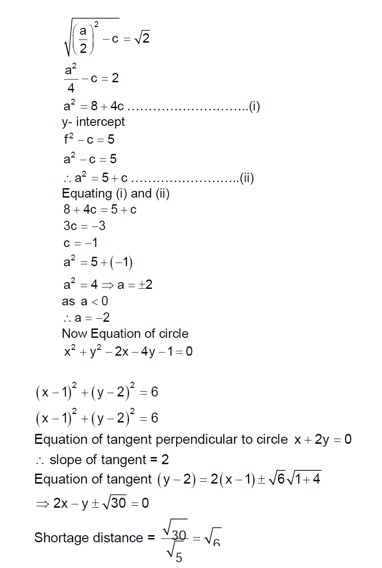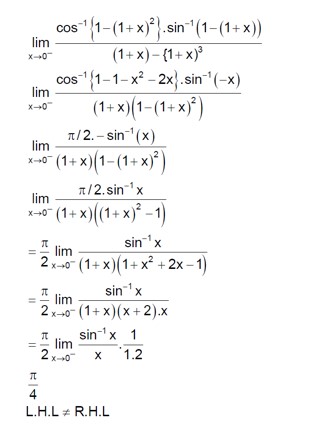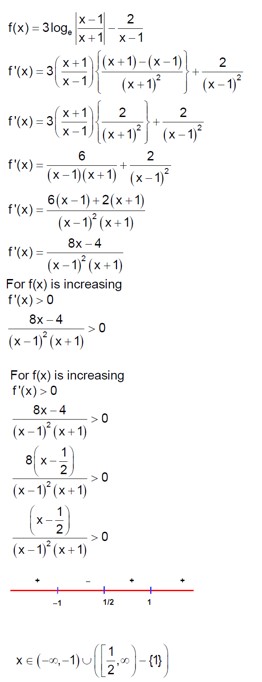Maths
Get insights from 6.5k questions on Maths, answered by students, alumni, and experts. You may also ask and answer any question you like about Maths
Follow Ask QuestionQuestions
Discussions
Active Users
Followers
New answer posted
2 months agoContributor-Level 10
The inequality is experience ( (|z|+3) (|z|-1) / (|z|+1) * log?2 ) ≥ log√? 16.
The right side is log? (1/2) 16 = log? (2? ¹) 2? = (4/-1)log?2 = -4. This seems incorrect.
Let's assume the base of the log on the right is √2. log√? 16 = log? (1/2) 2? = 2 * log?2? = 8.
The inequality becomes: 2^ (|z|+3) (|z|-1) / (|z|+1) ≥ 8 = 2³.
So, (|z|+3) (|z|-1) / (|z|+1) ≥ 3.
Let |z| = t. (t+3) (t-1) / (t+1) ≥ 3
t² + 2t - 3 ≥ 3t + 3
t² - t - 6 ≥ 0
(t-3) (t+2) ≥ 0
Since t = |z| ≥ 0, we must have t-3 ≥ 0.
So, t ≥ 3, which means |z| ≥ 3.
The minimum value of |z| is 3.
New answer posted
2 months agoContributor-Level 10
The equation of the circle is x²+y²+ax+2ay+c=0, with a<0.
x-intercept = 2√ (g² - c) = 2√ (a/2)² - c) = 2√2. So, a²/4 - c = 2 => a² = 8 + 4c - (i)
y-intercept = 2√ (f² - c) = 2√ (a² - c) = 2√5. So, a² - c = 5 => a² = 5 + c - (ii)
Equating (i) and (ii): 8 + 4c = 5 + c => 3c = -3 => c = -1.
Substituting c in (ii): a² = 5 - 1 = 4. Since a < 0, a = -2.
The equation of the circle is x² + y² - 2x - 4y - 1 = 0.
Completing the square: (x-1)² + (y-2)² = 1+4+1 = 6.
The center is (1,2) and radius is √6.
The tangent is perpendicular to the line x + 2y = 0 (slope -1/2).
So, the slope of the tangent is 2.
Equation of the tangent: (y-2) = 2 (x-1)
New answer posted
2 months agoContributor-Level 10
Solve sin? ¹ (3x/5) + sin? ¹ (4x/5) = sin? ¹x.
Using the formula sin? ¹a + sin? ¹b = sin? ¹ (a√ (1-b²) + b√ (1-a²):
sin? ¹ ( (3x/5)√ (1 - (4x/5)²) + (4x/5)√ (1 - (3x/5)²) ) = sin? ¹x
(3x/5) * √ (1 - 16x²/25) + (4x/5) * √ (1 - 9x²/25) = x
x * [ (3/5) * √ (25-16x²)/5 + (4/5) * √ (25-9x²)/5 - 1 ] = 0
So, x = 0 is one solution.
For the other part:
3√ (25-16x²) + 4√ (25-9x²) = 25
Let's check integer solutions. If x = 1:
3√ (9) + 4√ (16) = 33 + 44 = 9 + 16 = 25. So x = 1 is a solution.
If x = -1:
3√ (9) + 4√ (16) = 25. So x = -1 is a solution.
The solutions are x = 0, 1, -1.
New answer posted
2 months agoContributor-Level 10
The shortest distance D between two skew lines is given by the formula:
D = | (a? - a? ) ⋅ (b? x b? )| / |b? x b? |
Line L? : (x-1)/2 = (y-2)/3 = (z-4)/4
Line L? : (x-2)/3 = (y-4)/4 = (z-5)/5
Here, a? = I + 2j + 4k, b? = 2i + 3j + 4k
a? = 2i + 4j + 5k, b? = 3i + 4j + 5k
a? - a? = I + 2j + k
b? x b? = | I j k |
| 2 3 4 |
| 3 4 5 |
= I (15-16) - j (10-12) + k (8-9) = -i + 2j - k
D = | (i + 2j + k) ⋅ (-i + 2j - k)| / √ (-1)² + 2² + (-1)²)
= |-1 + 4 - 1| / √ (1 + 4 + 1)
= 2 / √6
New answer posted
2 months agoContributor-Level 10
The equation of the plane is given as x + y + z = 42. It is also mentioned that x³ + y³ + z³ = 3xyz.
From the identity, if x³ + y³ + z³ - 3xyz = 0, then x + y + z = 0 or x = y = z.
Given the expression:
3 + (x³ + y³ + z³ - 3xyz) / (xyz)²
Since x³ + y³ + z³ = 3xyz, the expression simplifies to:
3 + 0 = 3
Taking an Exam? Selecting a College?
Get authentic answers from experts, students and alumni that you won't find anywhere else
Sign Up on ShikshaOn Shiksha, get access to
- 65k Colleges
- 1.2k Exams
- 679k Reviews
- 1800k Answers







